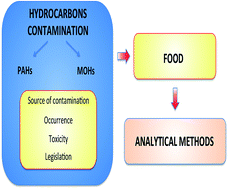Determination of hydrocarbon contamination in foods. A review
Abstract
Hydrocarbon contaminants in foods can be grouped into two main classes, based on the main process involved in their formation. The first class of contaminants is represented by mineral oil hydrocarbons, which include both saturated and aromatic hydrocarbons (mainly alkylated), originating from petrogenic processes. The other class of compounds originates from incomplete pyrogenic processes and comprises parent polycyclic aromatic hydrocarbons with 2-6 rings. The contamination with these compounds can occur at any stage of food production, namely from field environmental contamination, farming practices, food transformation processes (industrial and domestic), and migration from packaging materials. Although these contaminants are very similar from a chemical point of view and as far as some analytical issues are concerned, sample preparation and the final analytical determination applied are very specific. In this review the two classes of contaminants will be discussed separately, considering not only the analytical approach but also their source of contamination, toxicity and legislation issues.



 Please wait while we load your content...
Please wait while we load your content...